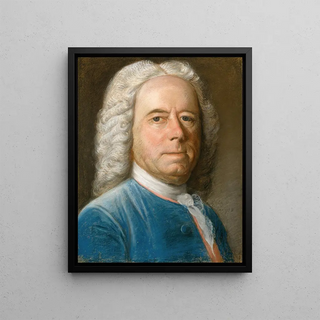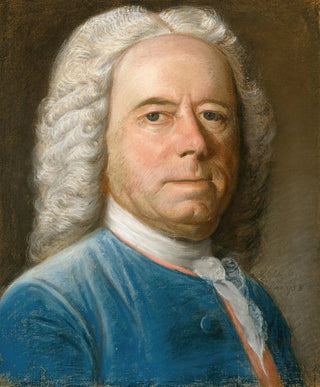Art print | Hugh Hall - John Singleton Copley


View from behind

Frame (optional)
Hugh Hall - John Singleton Copley – Captivating Introduction
The canvas titled "Hugh Hall" by John Singleton Copley embodies the very essence of 18th-century American portraiture. Through this artwork, Copley does not merely capture the physical features of his subject but also manages to seize the soul of the man he depicts. Hugh Hall, a prominent figure of his time, is portrayed with such precision and psychological depth that the viewer is immediately transported into the world of colonial New England. The soft light illuminating his face and the meticulous details of his attire testify to Copley's exceptional talent, a master of painting who has skillfully blended technique and emotion.
Style and uniqueness of the work
Copley's style is characterized by striking realism, an approach that sets him apart from his contemporaries. In "Hugh Hall," every element, from the drapery of the clothing to the expression on the face, is rendered with a meticulousness that reflects attentive observation of human nature. The composition is balanced, with Hall positioned to establish direct eye contact with the viewer, creating an intimate connection. The rich colors and delicate textures add a tactile dimension to the work, making the presence of the subject almost palpable. Copley also uses the background cleverly, choosing hues that highlight the main character while adding depth to the scene. This attention to detail and ability to evoke emotions make "Hugh Hall" a timeless work that continues to inspire and move.
The artist and his influence
John Singleton Copley is often regarded as one of the greatest portraitists of his era, and his influence on American art is undeniable. Born in Boston in 1738, he built a reputation by painting prominent figures of colonial society. Copley was a pioneer in the use of light and shadow, as well as in rendering textures, paving the way for many artists who followed. His ability to capture not only appearance but also the character of his subjects redefined portraiture and inspired generations of artists. Furthermore

Matte finish

View from behind

Frame (optional)
Hugh Hall - John Singleton Copley – Captivating Introduction
The canvas titled "Hugh Hall" by John Singleton Copley embodies the very essence of 18th-century American portraiture. Through this artwork, Copley does not merely capture the physical features of his subject but also manages to seize the soul of the man he depicts. Hugh Hall, a prominent figure of his time, is portrayed with such precision and psychological depth that the viewer is immediately transported into the world of colonial New England. The soft light illuminating his face and the meticulous details of his attire testify to Copley's exceptional talent, a master of painting who has skillfully blended technique and emotion.
Style and uniqueness of the work
Copley's style is characterized by striking realism, an approach that sets him apart from his contemporaries. In "Hugh Hall," every element, from the drapery of the clothing to the expression on the face, is rendered with a meticulousness that reflects attentive observation of human nature. The composition is balanced, with Hall positioned to establish direct eye contact with the viewer, creating an intimate connection. The rich colors and delicate textures add a tactile dimension to the work, making the presence of the subject almost palpable. Copley also uses the background cleverly, choosing hues that highlight the main character while adding depth to the scene. This attention to detail and ability to evoke emotions make "Hugh Hall" a timeless work that continues to inspire and move.
The artist and his influence
John Singleton Copley is often regarded as one of the greatest portraitists of his era, and his influence on American art is undeniable. Born in Boston in 1738, he built a reputation by painting prominent figures of colonial society. Copley was a pioneer in the use of light and shadow, as well as in rendering textures, paving the way for many artists who followed. His ability to capture not only appearance but also the character of his subjects redefined portraiture and inspired generations of artists. Furthermore






